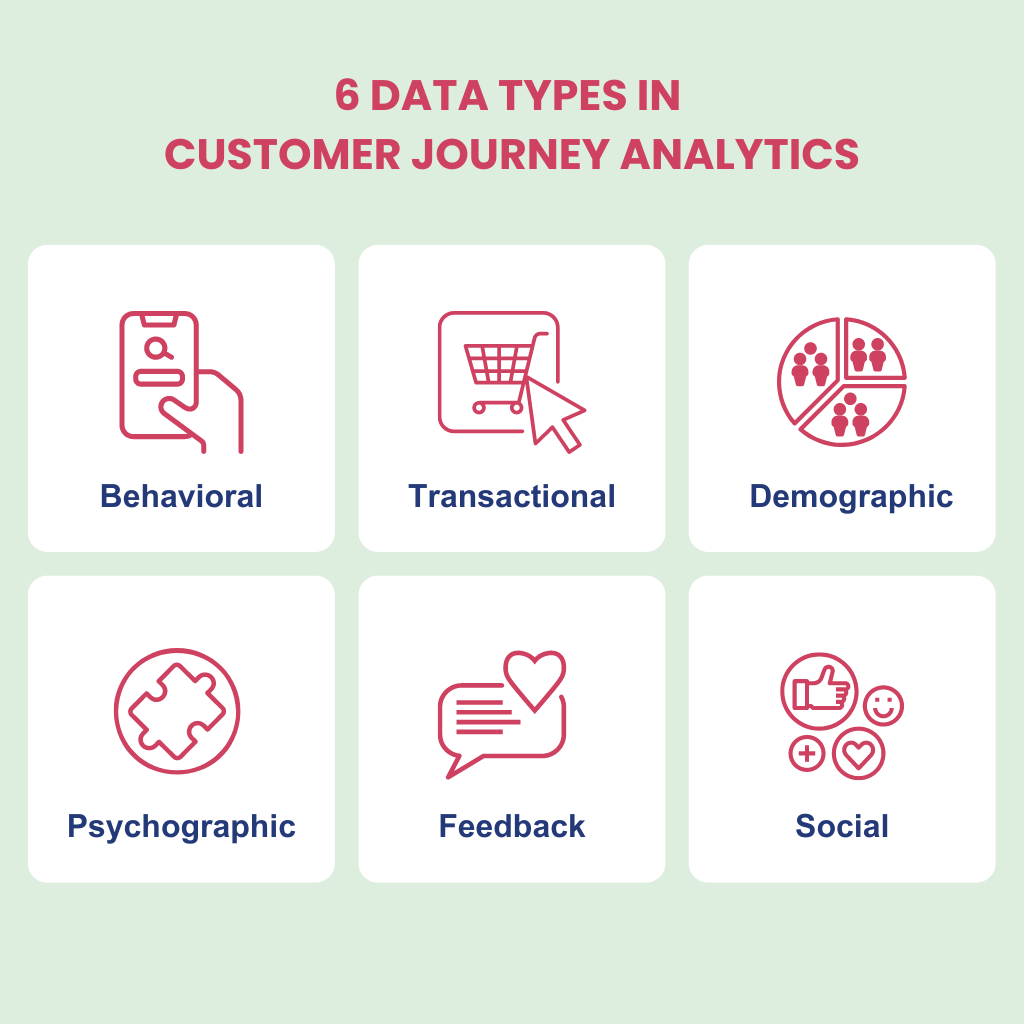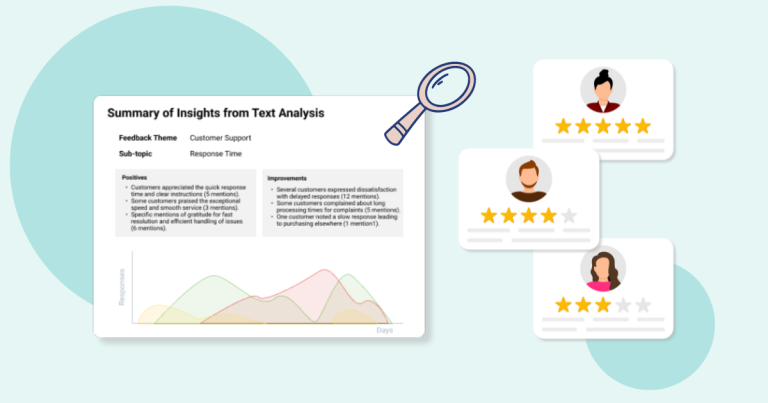Every customer experience professional understands the importance and benefits of customer journey mapping. Despite the widespread use of customer journey maps, there’s no standard for creating them. Every CX leader must know their business context to develop suitable customer journey maps. Even so, the way customers experience the journey can be very different from the journey designed by organizations.
Customer experience is the result of customers’ responses and reactions throughout the entire customer journey. That’s why focusing on specific touchpoints is not enough to ensure customer satisfaction and loyalty. In that scenario, customer journey analytics can help business leaders understand the full spectrum of customers’ experiences along the customer journey.
In this article, we explore the concept and best practices of customer journey analytics and how it can positively impact the customer experience.
The Main Components of a Customer Journey
Before implementing customer journey analytics, it is important to understand what the customer journey is. Once you know the core elements of the customer journey, you can identify the information you need from the analysis to be performed.
There is not a single way to design customer journey maps, but in general, the main components are customer, journey, goal, touchpoint, timeline, channel, stage, experience, and context.
- The customer is the stakeholder experiencing a service or product. In different contexts, this person may be a patient, a student, or a software user.
- A customer journey map contains at least one journey, which is the typical path followed by a customer when interacting with a business. The journey designed by organizations to describe what an ideal scenario would look like is the expected journey. The actual journey is how a journey is experienced by the customer.
- A customer journey should be mapped with a goal in mind. This goal is what triggers interactions with users
- A touchpoint is every interaction between customers and a business and its products or services. Examples of touchpoints are “searching for a product”, “contacting support”, or “booking an appointment”. A customer can iterate a few times over the same touchpoints but most of the time, the customer will not go through all the existing touchpoints as they might miss a planned touchpoint or simply quit the journey.
- The timeline describes the duration of the journey from the first until the last touchpoint.
- The channel is the method used by the customer to interact with the touchpoint, such as a helpdesk, website, or social media.
- A stage in the customer journey represents several touchpoints. A common split of the customer journey is: before, during, and after the experience, for example, before, during, or after a hotel stay.
- The experience refers to customer feedback and emotions. Common ways to measure the customer experience are sentiment analysis, feedback scores, open-ended feedback, and reviews.
- Some components of customer journey maps are context-specific. That means that the same map can be interpreted in different ways depending on the context.
The Benefits of Customer Journey Analytics
Customer journey analytics tracks data from every customer interaction across the entire journey to assess their business impact. The insights produced help businesses improve the customer experience at every touchpoint. These are some key benefits of customer journey analytics in customer experience:
- Highlight customer pain points and opportunities: the information generated by customer journey analytics can pinpoint the exact friction points where customers struggle. These insights help businesses find ways to convert potential frustrations into positive experiences. They also reveal opportunities for improvement and innovation.
- Increase personalization and customer engagement: the insights into individual customer behaviors and preferences can be used to personalize interactions, products, and services, making them more relevant and engaging.
- Improve customer retention and loyalty: by analyzing the journey of loyal customers and identifying patterns and key touchpoints it is possible to determine the factors that contribute to customer retention and loyalty. In addition, when businesses proactively address customer pain points, churn rates are likely to decrease.
- Drive data-driven and customer-centric decisions: one of the most important benefits of customer journey analytics is to provide business leaders with data-driven insights. Instead of relying on intuition, business leaders can make strategic decisions based on comprehensive and accurate data, that directly reflect the customer experience.
Main Data Types in Customer Journey Analytics
In customer journey analytics, the quality of the output depends on the data used. Various types of data collected from different touchpoints throughout the customer journey can be used. Here are the main data types:
- Behavioral Data: This type of data is especially used in digital customer journeys. It tracks how customers interact with a business in different channels, like a website, an app, or an online store. The metrics monitored include page views, click paths, time spent on pages, and engagement with features or products.
- Transactional Data: These are the records of customer transactions, including purchases, returns, and cancellations. This type of data provides insights into purchasing patterns, average order value, and frequency of purchases.
- Demographic Data: This is basic customer information such as age, gender, location, and income. When available, this information helps segment customers for personalized experiences.
- Psychographic Data: This data includes information about customers’ lifestyles, interests, values, and opinions and is useful for understanding the motivations behind purchasing decisions.
- Feedback Data: This is data collected from customer surveys, reviews, and direct feedback. Customer feedback provides quantitative and qualitative insights into customer satisfaction, preferences, and pain points.
- Social Data: The data collected from social media interactions and engagement from platforms like Facebook, Twitter, and Instagram can add a layer of insights to the analysis of the customer journey.

Best Practices in Customer Journey Analytics
Ensure Data Accuracy and Consistency
Effective customer journey analytics rely on accurate and consistent data. To ensure your data is in good shape, here are some things to keep in mind:
- Use reliable tools and platforms to gather data from various touchpoints. Ensure these systems are well-integrated and up-to-date to provide a seamless flow of information.
- Establish clear guidelines for data entry and formatting to maintain uniformity across different data sources, making it easier to analyze and compare data.
- Conduct frequent audits to identify and correct inaccuracies. Regular checks help maintain the quality of data and ensure you can trust the insights of the analysis.
- Make sure that data is updated in real-time so that the analytics reflect the latest customer behaviors and trends.
Nurture a Data-Driven Culture
There’s no point in getting started with customer journey analytics if the insights it produces are not used in decision-making. Sometimes, a cultural change is needed to build an environment where decisions are based on data rather than intuition or tradition. It is not an easy task, but here are some tips:
- Get your leaders on board and transform them into advocates of data-driven decision-making. Their support can inspire the rest of the team to be more data-centric in their daily work.
- Make data easily accessible to relevant people. Transparency helps teams understand the impact of their actions and encourages data-driven decisions.
- Equip employees with the skills to interpret and use data effectively.
- Recognize and reward employees who use data effectively to drive decisions and achieve positive outcomes.
Promote Cross-Department Collaboration
Customer journey analytics involves data from multiple touchpoints, often owned by different departments. This is how you increase collaboration to get the most out of it:
- Form cross-functional teams to work together in analyzing data and interpreting the insights.
- Use unified platforms that allow different departments to access and contribute to the same data sets to ensure consistency and reduce silos.
- Have regular meetings to share insights, discuss findings, and align on strategies, getting everyone on the same page.
- Include customer experience goals in every department’s performance metrics to ensure everyone in the organization works towards customer-centricity.
Every organization can benefit from customer journey analytics. Especially those that embrace a culture of customer-centricity, data-driven decision-making, and continuous improvement. These organizations will be the winners in the customer experience game, fully leveraging the benefits of advanced customer journey insights. If your organization is not there yet, start by investing in a cultural shift to encourage your team to base their decisions on data rather than intuition and to make the customer the focal point of all business strategies. When teams work together to improve the customer journey with a mindset of constant learning you are better equipped to use customer journey analytics effectively and drive better customer experiences.
Did you like the post?
You might also like:
Hot and trending:

Surveypal
Everything you need to lead and improve your customer experience. Learn more at surveypal.com, or






